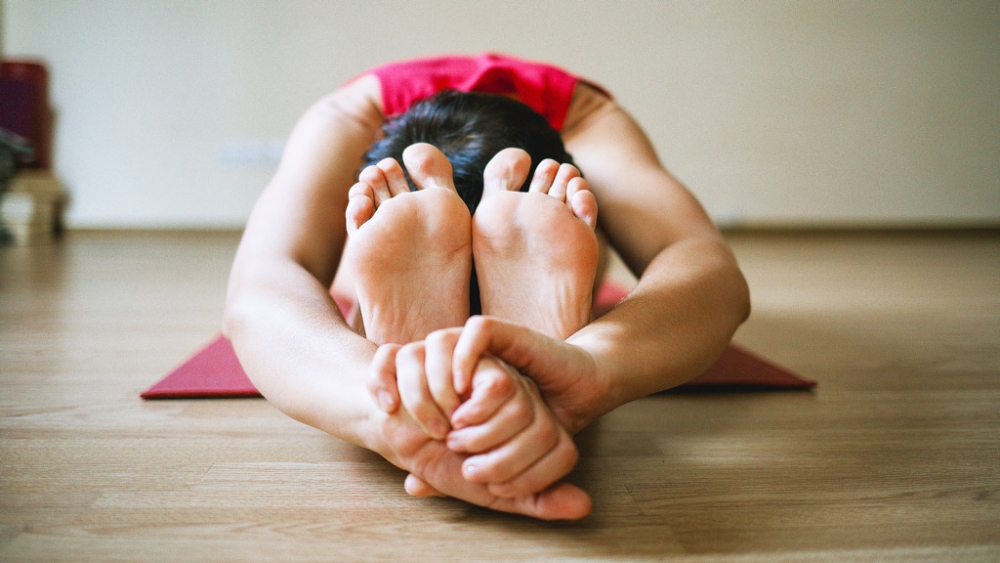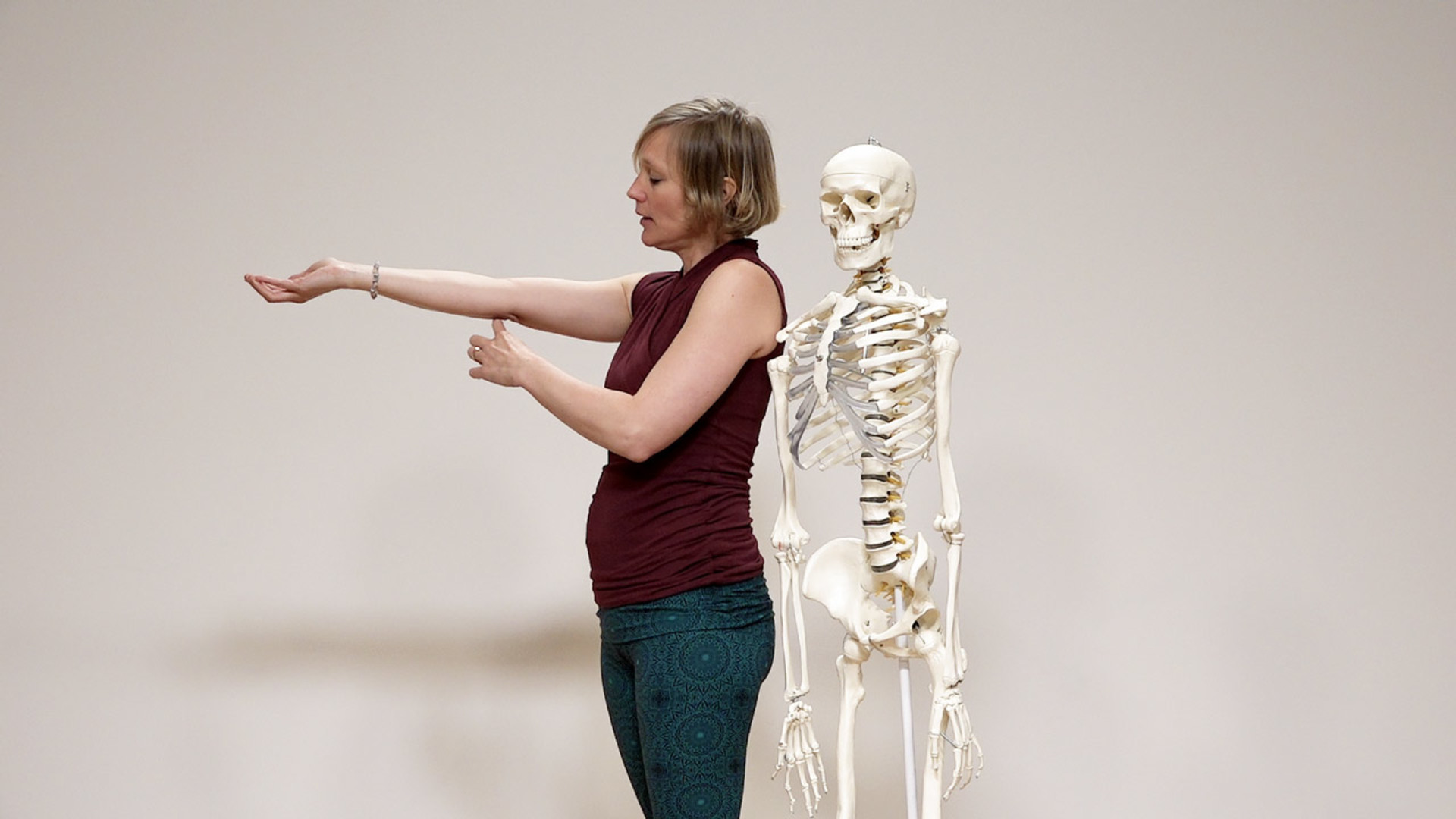Associated with extreme flexibility and unusual range of motion – hypermobility is something that a surprisingly large percentage of yoga practitioners deal with, whether they know it or not….
Those photos of incredibly intricate contortion-like asanas may seem impressive at first, but they’re almost always performed by someone who could be clinically diagnosed as ‘hypermobile’. Even the ability to fold forward into Uttanasana and touch the floor with palms flat could be classed as hypermobile. If you find yoga postures easy, and you’ve always been able to fold your legs into lotus pose without any discomfort, you could also be hypermobile.
It’s not surprising that hypermobilty is prevalent amongst yoga practitioners; as humans we’re inclined to stick with things we enjoy doing. If you step into a yoga class for the first time and find it relatively comfortable (or at least not torturous!), you’re a little more likely to return than is the person silently swearing at the teacher as they instruct another downward facing dog, and wondering whether they’ll ever be able to walk again after class is over….
Flexibility is positively reinforced throughout yoga classes, with those who aren’t able to attain a shape simply told to ‘practise more’. However, is extreme bendiness really something we should be overtly praising?
Flexibility is positively reinforced throughout yoga classes. However, is extreme bendiness really something we should be overtly praising?
The price of extreme flexibility
Joint hypermobility is often accompanied by a recurrence of soft tissue aches, pains and injuries; while the joints have an extreme range of motion, the muscles don’t always allow for quite as much movement. When a hypermobile person stretches, bends, twists and turns, their joints are happy to go a whole lot further than their muscles, which can often mean that practising physical yoga is quite ‘easy’ for them, although they’re actually more likely to suffer from serious injuries than the guy at the back complaining of his ‘tight’ hamstrings or ‘stiff’ shoulders.
Being overly flexible is praised in the modern social-media-stained yoga community, with the attainment of a difficult posture awarded with thousands of ‘likes’ and ‘follows’. The thing is, it’s only serving to exacerbate the number of yoga injuries that plague classes across the world.
What is the reason for hypermobility?
Neurologists don’t fully understand hypermobility at present – they presume it may be due to some sort of genetic collagen mutation – but what they do know is that those with hypermobility are more likely to experience fibromyalgia, osteoarthritis, and neuropathic pain or numbness. These individuals bruise easily, and often have a lot of elastin in the skin, as well as being prone to an over-sensitivity of the nervous system, low blood pressure, circulatory issues, and digestive issues.
US medical practitioner Dr. Pocinki, says that those with hypermobility have ‘stretchy’ blood vessels and that this encourages the body to make extra adrenaline. This excessive adrenaline makes hypermobile people more prone to stress and anxiety, and over time can result in depleted adrenal glands and chronic adrenal fatigue. If that wasn’t enough, hypermobility is also linked to an increased risk of autoimmune diseases.
Does yoga help?
So the controversial question and one many long-term practitioners and traditionalists often avoid, is: does yoga make hypermobility worse?
So the controversial question, and one many long-term practitioners and traditionalists often avoid, is: does yoga make hypermobility worse?
As always, it’s down to not just what you do, but how you do it. Yoga practised with Ahimsa (non-harming), awareness, without ego-driven intentions and in a way that safely strengthens the body can indeed be a wonderful remedy for hypermobility. However, yoga practised too fast, too hard, with ego-driven intentions and the determination to feel strong sensations or stretch further and further, can, of course, be damaging.
Dianne Bruni is a teacher who began practising yoga in 1978 with Yogi Bhajan, and went on to practice and teach Ashtanga Yoga. After years of practicing, she was experiencing knee pain and was advised to focus on opening the hips in order to ‘cure’ this, and also that the pain was ‘normal’, and ‘a part of the change that was taking place’. Pain is so often blamed on karmic impurities or even necessary for spiritual purification (as is actually referenced in the Yoga sutras). After over-stretching her hip muscles, they literally tore from the bone. After recovering from her injury, she now teaches less linear postures, functional movement, mobility, natural breathing.
Indeed, it’s wise to take a step back from communities who praise extremes – and if you’re experiencing pain, consult a teacher or medical practitioner, and spend some time reflecting upon your practice. Yoga can be healing, healthful, and a wonderful life-affirming practice, if we let it be.
Advice for practising with hypermobility
Micro-bend the joints:
Even if you can straighten your elbows and knees fully, it doesn’t mean it’s good for your body. Instead of fully straightening the limbs and ‘hanging’ in the joints, bend them slightly, which allows for more muscular engagement and protects from over-stretching muscles and causing wear-and-tear to joints.
Focus on your centre:
Instead of stretching outward – focus on drawing into your center or midline, and think about ‘hugging’ the joints in.
Work on your imbalances:
Over-stretched or particularly flexible muscles often compensate for tighter parts of the body. Practise movements and postures you don’t find easy, in order to work out where the body is holding on too tightly, and where it needs strengthening.
Always tell your yoga teacher if you’re particularly hypermobile
If a teacher sees a student who is very physically able, they may use adjustments in order to take them ‘further’ into the posture. Although it’s always done with the best intentions, this is when a hypermobile student is vulnerable to injury. Ask for hands-off adjustments, no adjusting, or simply tell your teacher and ask how they might be able to advise you. Some great adjustments include adding a little resistance to a student’s limb in order to help them recognise where to engage the muscles, and in order to activate more core awareness.
Practise pranayama, meditation and Yoga Nidra as a way to relax the nervous system and bring the body and mind back into balance.
- If you enjoyed this article, you might also be interested in reading The flexibility myth by Sandra Carson.
Hypermobility versus hyperextension
If you experience hypermobility or hyperextension or don’t know the difference between them, this talk is for you. José explains what hypermobility and hyperextension are, how they affect your yoga practice, and how you can practice yoga safely.


